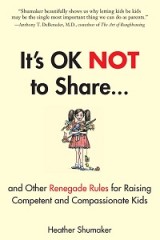A World of Books and Children
Search and enjoy 8 years of posts chock-filled with ideas from It’s OK Not to Share and beyond.
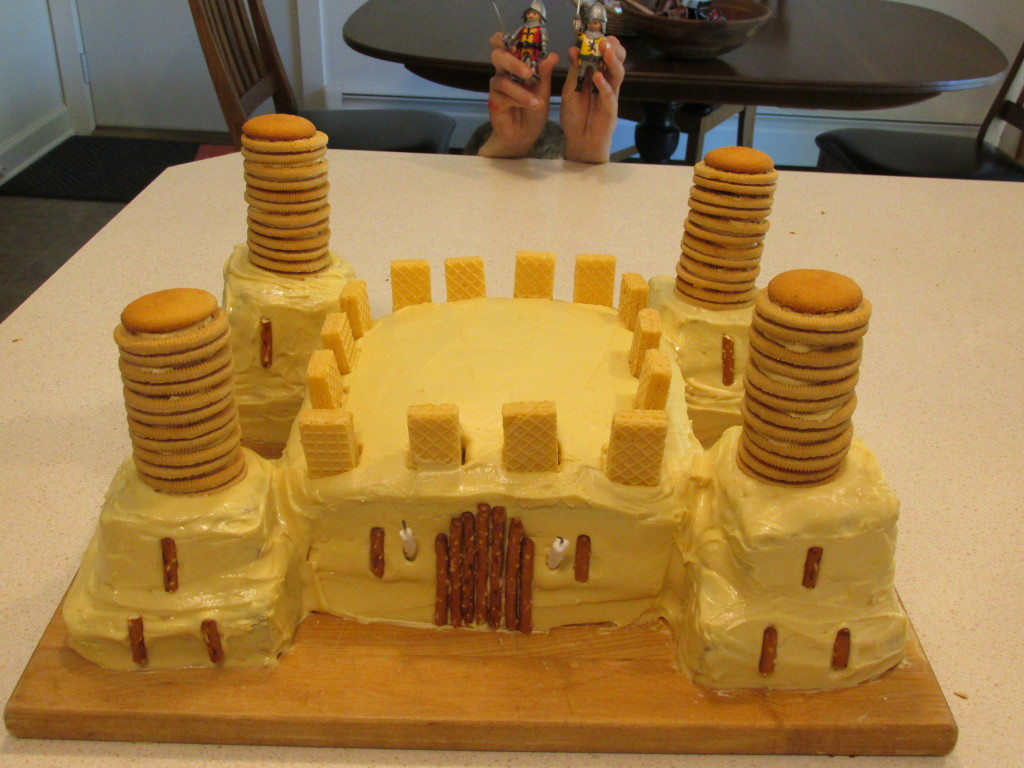
The castle cake just before it was besieged. See the knights in the background.
I was just talking to fellow parenting author Jessica Joelle Alexander about the virtues of cake. She's the author of the new book The Danish Way of Parenting, and describes how Danish teachers focus on empathy lessons every week from preschool through age 16, and do it with cake.
Cake seems like a good way to restart the Starlighting Mama blog for the season. The blog and I take summers off from each other. In summer, the outdoors is calling, the children are calling, and computers are cool, but not all the time. So here we are back again, and I can't resist sharing with you my newest cake creation, created for my son's birthday: A Besieged Castle.
Not just any castle, as you can see. It had to be actively under siege. So besides the vanilla wafer crenellations on the battlements, we have knights and siege engines attacking the castle walls.

The siege begins!
The central castle is made from two 8" square cakes stacked on top of each other. I baked a second set of square cakes and cut them into quarters and something less than quarters to make foundations for the towers (toothpicks help keep the towers stable). Then there's stacked blond Oreos for the top of the towers, crowned by Nilla wafers. I've used fruit roll-ups before for windows and doors, but since this was a working fortress castle, we used pretzels for arrow slit windows (also called "loopholes") and the castle door.
To accompany this cake, the kids devised various rough-and-tumble games, including making their own cardboard shields and then staging sword fighting duels and having an archery contest. After all that, they were ready to attack the cake castle.
Welcome back to the blog. If you like podcasts, I also started a podcast six months ago called Renegade Rules. You can listen via iTunes or Stitcher weekly on Saturdays. The podcast interview with Jessica and ideas from "The Danish Way" will be up in October.
Meanwhile - celebrate life with cake.
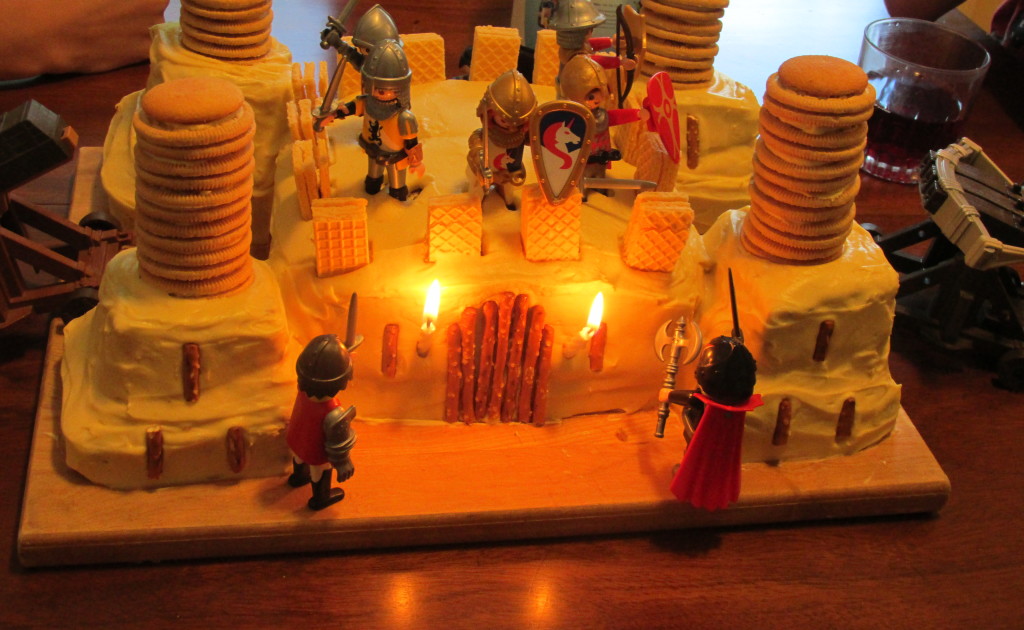
Flaming torches crown it all. Of course, the good guys win.
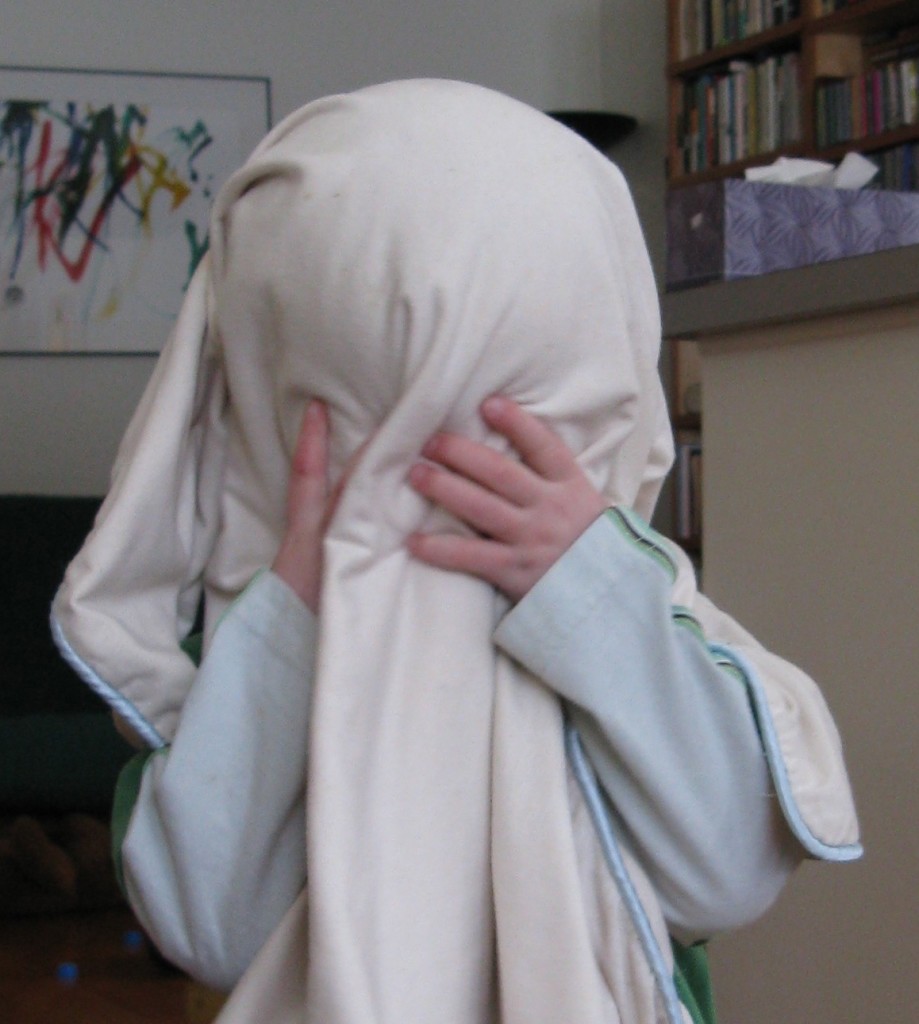
Kids often carry real worries about events in the news. Talking can help kids cope.
News disasters don't just stay in the news. Children encounter them.
When something terrible happens, kids want to know why. We may not think they even know what's going on in the adult world - but you'd be surprised. Kids pick up more than we think. They pick up our fears. And they deserve age-appropriate honest answers.
This weekend I witnessed a scene that sums up childhood. My kids were romping outside with a friend, immersed in a game of imagination. They were outside in nature. Running through the meadow. Working out the game rules. The scene from my window was idyllic.
When they came in, my youngest announced "We were playing ISIS."
ISIS. What a chilling game.
This is childhood. Childhood is about running carefree through meadow grass. But it's also more complex than that. Childhood play is about sorting out the world, processing fears, figuring out what's happening in the adult world and how to cope with it.
I admit the shock value stunned me a bit. But, of course, ISIS is part of this world and therefore it's part of children's play.
After the game I asked the kids what they knew about ISIS - "they're hiding in Michigan." We talked and I answered their questions about Islam, radical Islam, what radical Islamic terrorists didn't like and why they might be angry. Usually after an in-depth talk like this the kids get done quickly and are ready to move on. Not on this topic.
When I checked in: "Have I answered your questions? Are there still things you want to know?" The answer was:
"Tell me more."
Kids generally want to know more until they feel safe. We can't guarantee safety, but we can help a child feel safe.That's the root of it. The child wants reassurance that adults around him will take care of him.
Feeling safe
- My fears and feelings have been heard
- I'm lucky to live in a place that's one of the safest in the world
- I know what to do if there's an emergency
- I can talk to my parents about anything
- Knowing what it's all about makes the world less scary
Baffled? Don't know what to say? My book It's OK to Go Up the Slide devotes a whole chapter to talking to kids about news disasters - war, genocide, modern slavery, refugees, shootings, natural disasters, the whole gamut.
Remember, if she's old enough to ask, she's old enough to get an honest answer.
We shouldn't flood young children's minds with disaster, but we need to be aware that young kids pick things up. They pick up information and misinformation on the school bus. At recess. From classmates. From overheard news reports. From overheard adult conversations. They hear scare stories and real stories and mix it around in their heads trying to sort it out to make sense.
And, yes, they play it out.
So check in once in a while. Ask kids if there's anything they've heard adults or kids talking about that worries them. Talk. Let them play. You might be surprised how sophisticated little people's worries about the world can be.
What big topics have you heard kids bring up? Any funny misinformation stories? What's been your reaction?
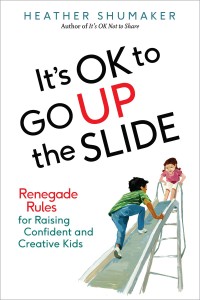 It's OK to Go Up the Slide explores this ideas in more depth and offers words to guide big, tricky conversations on news and news disasters.
It's OK to Go Up the Slide explores this ideas in more depth and offers words to guide big, tricky conversations on news and news disasters.
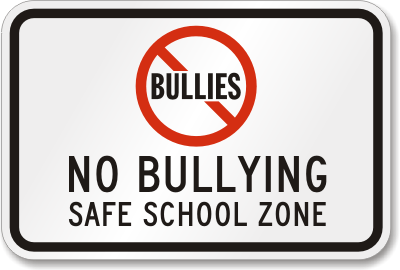
Anti-bullying programs are well-intentioned. But only real skills work.
When grown-ups realized bullying was a big, bad problem, they did what they usually do: they banned it. Zero-tolerance. Automatic suspension. Kids forced to sign contracts to report bullies.
Now the National Academies of Sciences, Engineering, and Medicine, an independent government advisory group, reports that zero-tolerance policies in schools don't work. That's no surprise.
You can't solve a problem by wishing it away. Or banning it. Or expressing zero-tolerance. But you can change a bullying kid and a bullying culture. Yes, it's completely possible, but it takes hard work.
When stories of zero-tolerance for bullies began reaching my ears a few years ago, I knew the programs would fail. Why? Because changing human behavior means confronting difficult feelings and teaching new skills. Just saying "no" to bullying does not work. Kids need skills to deal with the conflict. So do the adults around them.
As one of the report's authors said, zero-tolerance programs don't work because they don't provide "skill training or replacement behaviors."
Bullying is one type - and a common type - of conflict. Confronting and reducing bullying requires first and foremost a willingness to confront conflict both by the kids and the adults around them. It can't be conveniently outlawed (think alcohol and Prohibition). It can't be removed by singing peace and friendship songs. People need actual training in the art of conflict mediation. This training can begin as young as age two. It's also never too late. Teens and adults can learn.
To tackle bullying we need different tools: Courage. Honesty. Time. New skills. An effective anti-bullying program involves deep feelings, conflict confrontation and opening minds to new ideas. These take time, and can be somewhat messy, but together children and the adults who support them will emerge stronger and kinder for the effort.
Has your school got it right? How is bullying handled where you live? What stories do you have to share? Have you seen zero-tolerance being phased out and replaced with more effective training?
Be courageous. Take the first steps towards anti-bullying. Dive into the wonderful world of conflict mediation. It starts by kids standing up for themselves. It starts by kids expressing emotions -- even big, scary ones - appropriately.
Start learning the skills to prevent real bullying. Get a copy of It's OK Not to Share for a child, school or family you love today.

